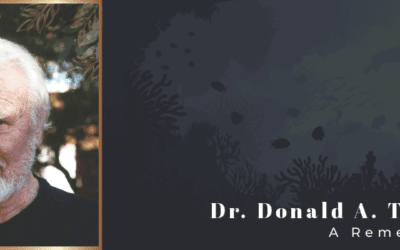[vc_row][vc_column][vc_separator][vc_column_text]By: Christine Flanagan, Board President of CEDO Inc[/vc_column_text][/vc_column][/vc_row][vc_row][vc_column width=”1/3″][vc_single_image image=”1394″ img_size=”full” onclick=”link_image”][/vc_column][vc_column width=”2/3″][vc_column_text]Climate change, drought, increasing heat, wildfires—all are in the news and the feeling of dread is getting harder to ignore. Even if you turn off your TV, radio, and computer, and stop the newspaper, the headlines and details are all around us—i.e., growing around us.
Our desert plants are suffering, slowing down, going dormant, and waiting. After the scant winter rains this year, the summer rains will be critical.[/vc_column_text][/vc_column][/vc_row][vc_row][vc_column][vc_column_text]Annuals and perennials may escape as seeds waiting it out in the soil, but trees and shrubs stand in place. Some already have died and others won’t make it to July. And if the monsoons don’t come, many others will be pushed even deeper into decline.[/vc_column_text][vc_column_text]In response to climate change, the composition of our plant communities is changing, slowly, but fast enough to observe if you slow down and open your senses to your surroundings. Busy with our own lives, many of us may not have noticed. As the saying goes, “love is blind” but when it comes to plants, the “not seeing” is more fundamental: Many people suffer from plant blindness.[/vc_column_text][/vc_column][/vc_row][vc_row][vc_column width=”1/2″][vc_column_text]Plants are alive. This is obvious—or is it? You know this because you learned it at some point. But have you really experienced them as a fellow living being?
Think of any plant that you know. Can you recall it as a seedling? Do you remember its first bloom or fruit? Chances are, unless you are a gardener, a farmer, or a plant scientist, these milestones of a plant’s life pass without notice. Is it even possible to know a plant? Do plants have lives?[/vc_column_text][/vc_column][vc_column width=”1/2″][vc_single_image image=”1395″ img_size=”full” onclick=”link_image”][/vc_column][/vc_row][vc_row][vc_column][vc_column_text]Many of us think of and treat plants as inanimate objects. But a plant grows, reacts to inner and outer stimuli, reproduces, responds to disease and injury, communicates with other plants, and over a lifetime, if things have gone well, undergoes a slow decline into senescence—a saga that sounds hauntingly familiar.[/vc_column_text][/vc_column][/vc_row][vc_row][vc_column width=”1/3″][vc_column_text]In a sense, our “plant blindness” is a handicap. Human senses are tuned to react to movement: the stalking predator, the advancing storm, a threatening gesture.
Seemingly stationary, plants don’t catch our attention. But, contrary to our conscious perception, plants do move, slowly.[/vc_column_text][/vc_column][vc_column width=”2/3″][vc_single_image image=”1397″ img_size=”full” onclick=”link_image”][/vc_column][/vc_row][vc_row][vc_column][vc_column_text]As a group, plants are among the slowest forms of life. Their movements, barely perceptible, beg no urgency or relevance for most humans, who navigate a world paced by continuous and constant communication. And plants rarely make sounds. As a consequence, plants are receding in our collective and individual consciousness.[/vc_column_text][/vc_column][/vc_row][vc_row][vc_column][vc_column_text]Until the advent of industrialized agriculture, the rhythms of human society were aligned with the rhythms of plants. However, recent human history has defied these limitations—fresh produce, textiles, wood, and the myriad other products from plants on which we depend are available almost at will. Moreover, our inability to empathize with plants as living things reduces our regard for plants to practical aspects of agriculture, science, economics, or landscaping—if we think of them at all.[/vc_column_text][vc_column_text]We value plants as forms that bring color, texture, fragrance, comfort, and curve to the rectilinear dullness of our cities, but that can now be achieved with realistic artificial plants (and they require less maintenance). I once saw some artificial palms in pots deep in a dark parking garage at an airport—we ought to ask ourselves why.[/vc_column_text][/vc_column][/vc_row][vc_row][vc_column width=”1/3″][vc_single_image image=”1398″ img_size=”full” onclick=”link_image”][/vc_column][vc_column width=”2/3″][vc_column_text]We build structures, roads, and cities. We clear the natural landscape for farms and then abandon fields when the money or the water runs out. Everyday individuals in their families, committees, and governments, make decisions as if plants are optional.
As a consequence, everywhere we look, the globe is becoming less “green” and, measurably, less alive. We seem not to notice.[/vc_column_text][/vc_column][/vc_row][vc_row][vc_column][vc_column_text]The truth is, plants, humans, and most other life-forms are inextricably intertwined, locked in a dynamic co-dependent struggle for survival. Green is the color of life, and plants are the basis of the ecosystems that support us. They clean our air and water, provide our food, give us shade, hold and nurture our soils, provide medicine, and inspire enduring symbols of our cultural values. It is in our own self-interest to pay them more attention. There are many reasons besides carbon credits to plant trees.
Our landscapes are bearing witness to the changes in our climate. It is up to us to notice and to intervene.[/vc_column_text][/vc_column][/vc_row][vc_row][vc_column][vcj_team_member image=”1399″ name=”About the Author:” layout=”style3″ image_ratio=”portrait” color_name=”#ca972e”]
Christine Flanagan
Board President of CEDO Inc.
Is a second generation native of Arizona. She recently retired and returned to Tucson from the position of Public Programs Manager at the U.S. Botanic Garden in Washington DC, where she was responsible for interpretive planning, exhibits, education, and a national partnership program. She previously served on the boards of the American Society of Plant Biologists Foundation, the National Gardening Association, and Friends of the State Arboretum of Virginia. From 2012- 2015 she led a project in Cuba to document and digitally access the records and objects of the historic Matanzas Pharmacy, now a national museum. She holds a Ph.D.in Ecology and Evolutionary Biology from the University of Arizona where she studied marine reef fish communities of the central Gulf of California.[/vcj_team_member][/vc_column][/vc_row][vc_row][vc_column][vc_column_text][ctct form=”1153″ show_title=”false”][/vc_column_text][/vc_column][/vc_row]









0 Comments